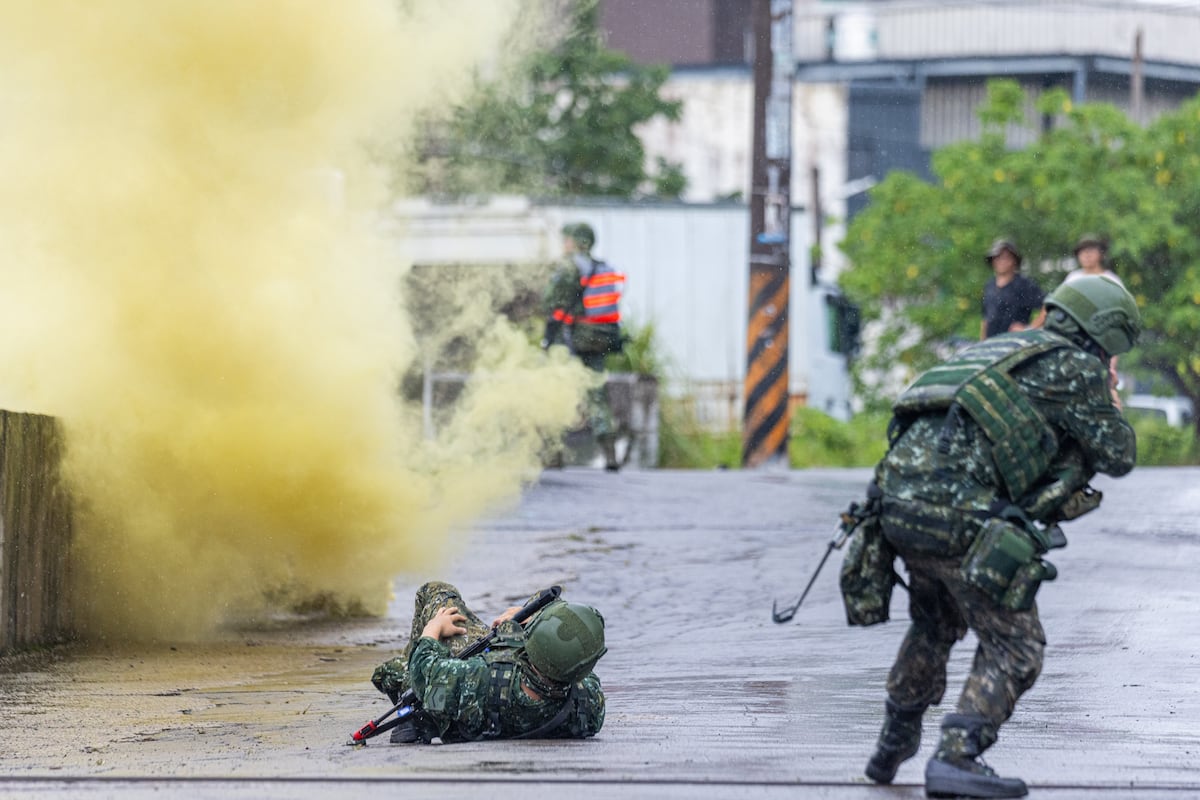

A Chinese blockade could cut Taiwan’s electrical generating capacity so much that the island is unable to function, according to war games conducted by a U.S. think tank.
“Energy is the weakest element in Taiwan’s resilience against coercion,” warned the report by the Washington-based Center for Strategic and International Studies. “The overwhelming preponderance of energy must be imported and is thus vulnerable to a blockade.”
China could supplement a blockade with attacks on Taiwan’s electrical grid, as Russia has done with some success in Ukraine.
“Total electricity production might be reduced to 20 percent of pre-blockade electricity levels,” CSIS said. At that level, all manufacturing ceases – including computer chips vital to the U.S. and the global economy.
These conclusions came from a series of 26 war games run by CSIS to test a blockade of Taiwan, an attractive option for Beijing that offers the prospect of Taiwan agreeing to “reunify” with China, without the need for a bloody and risky Chinese amphibious invasion.
CSIS researchers matched up various combinations of variables in each scenario, with the scenarios simulating 20 weeks of game time.
For example, the severity of China’s blockade ranged from a mere China Coast Guard stop-and-search operation to an all-out military effort that launched missiles at U.S. and Japanese bases.
Other variables included hardening Taiwanese infrastructure and anti-invasion defenses, procuring additional cargo ships for convoys, more lethal Chinese missiles, whether Japan chose to defend Taiwan, and whether the fighting extended beyond the local blockade zone.
The CSIS report admitted that some of these scenarios “are uninteresting because of the force mismatch: No one could doubt that a China willing to embark on a wider war against a constrained Taiwan could completely cut off imports to Taiwan.” Yet assuming various changes in U.S., Taiwanese and Chinese policy, strategy and forces had a major impact on scenario outcomes.
For example, a nightmare scenario depicted attacks on Taiwan’s electric grid and strikes on American airbases in Japan and Guam, while the U.S. refrained from hitting airbases on the Chinese mainland.
Chinese air forces “were able to crowd into forward coastal air bases without risk of being hit by air strikes,” while “the escalation level greatly improved the survivability of Chinese warships and submarines, which took shelter as needed in ports or other areas immediately offshore,” the report said.
In that game, the U.S. and Taiwan lost 33 surface warships – including two aircraft carriers – and 153 merchant ships. With Taiwan’s electrical generation meeting just 24 percent of demand, the result would be “not just economic collapse but also the failure to meet even minimal health and safety activities for the population.”
But in another scenario, Taiwan hardened its electrical infrastructure, the U.S. took a more aggressive posture, and large numbers of merchant ships were available to carry supplies to Taiwan. In this iteration, Chinese air and naval losses rose sharply, more cargo ships successfully ran the gauntlet to reach Taiwan, and there was sufficient electricity to meet most of the island’s demand.
Interestingly, five of the 26 scenarios were “free play” games where players could choose to escalate, deescalate, or negotiate an “off ramp” to end the conflict, rather than being locked into a course of action.
Most players seemed reluctant to escalate, CSIS noted. Yet they often made “small escalations” to signal the opposition, who responded with counter-escalations. In all five games, naval forces fired upon each other and suffered losses.
While a blockade would be grim for Taiwan, it is not hopeless. For example, the capability to assemble large numbers of merchant ships – and the necessary crews – would be the most important preparation that Taiwan and the U.S. can make, according to CSIS.
This includes sufficient liquified natural gas tankers crucial to meeting Taiwan’s energy needs, as well as providing governmental insurance to replace commercial insurers who avoid war zones. Transshipment will be key: most merchant ships won’t run a blockade, but their cargo can be unloaded in Japanese ports, and then reloaded aboard vessels that will make the Taiwan run.
Taiwan can also reduce its dependence on imported energy. This could include boosting its reserves of oil, natural gas and coal, and even reopening its last nuclear plant, which shut down in May. Meanwhile, the island’s electrical grid could be hardened, including stockpiles of spare parts such as transformers and turbines.
For its part, the U.S. could increase its air transport capacity for a Berlin 1948-style airlift. While insufficient to meet all of Taiwan’s needs, “in some circumstances, an airlift could have a powerful moral effect and provide some breathing room,” CSIS said. In addition, the U.S. Navy will need to improve its capability for convoy escort.
Ultimately, perhaps the most crucial step is to ensure that diplomacy is always an option. A Chinese blockade of Taiwan – and retaliation by the U.S. and its allies – could devastate the global economy, and not least the economies of China and America.
“Creative offers by the United States and Taiwan might allow China to declare victory and lift the blockade at an acceptable cost to the coalition (e.g., Taiwan agreeing to international observers in customs houses; reiterating the 1992 Consensus verbatim),” CSIS concluded.
Michael Peck is a defense writer whose work has appeared in Forbes, Business Insider, Foreign Policy magazine and the Center for European Policy Analysis. He holds an MA in political science from Rutgers Univ. Follow him on Twitter and LinkedIn.







-3.png)



